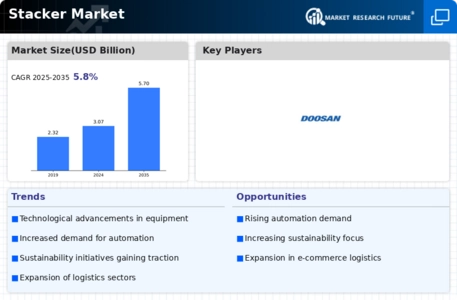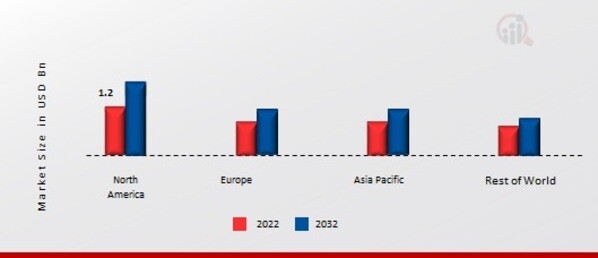Market Trends
Key Emerging Trends in the Stacker Market
The stacker market has been witnessing notable trends in recent years, driven by various factors such as industrial automation, warehouse optimization, and advancements in material handling technology. One significant trend in the market is the growing demand for automated stackers in warehouses and distribution centers. With the rise of e-commerce and the need for efficient inventory management, businesses are increasingly investing in automated stackers to streamline warehouse operations, improve productivity, and reduce labor costs. Automated stackers, equipped with features such as robotic arms, sensors, and navigation systems, can perform tasks such as pallet stacking, retrieval, and transportation autonomously, making them ideal for high-volume and repetitive material handling tasks.
Moreover, sustainability has emerged as a key trend shaping the stacker market. As environmental concerns become more pressing, there is a growing emphasis on sustainable practices and energy-efficient solutions in material handling operations. Manufacturers are developing stackers with advanced energy management systems, regenerative braking technology, and eco-friendly materials to minimize energy consumption and reduce carbon emissions. Additionally, stackers equipped with lithium-ion batteries offer longer operational lifespans, faster charging times, and lower maintenance requirements compared to traditional lead-acid batteries, making them a preferred choice for environmentally conscious businesses seeking to reduce their carbon footprint.
Furthermore, technological advancements have led to innovations in stacker design, functionality, and connectivity, driving market growth and diversification. Advanced features such as integrated telematics systems, predictive maintenance algorithms, and remote monitoring capabilities enable real-time monitoring and optimization of stacker performance, leading to improved efficiency, uptime, and cost savings for operators. Moreover, the integration of Internet of Things (IoT) technology allows stackers to communicate with other warehouse equipment and systems, enabling seamless coordination and synchronization of material handling tasks. These technological advancements are driving innovation and differentiation in the stacker market, catering to the evolving needs of industries such as logistics, manufacturing, and retail.
Additionally, the COVID-19 pandemic has had a significant impact on the stacker market, influencing consumer behavior, supply chain dynamics, and market trends. With lockdowns and restrictions disrupting global supply chains and distribution networks, businesses faced challenges such as inventory shortages, delivery delays, and increased demand for contactless material handling solutions. However, as economies gradually reopen and businesses adapt to the new normal, the demand for stackers is expected to rebound, driven by the need for efficient and flexible warehouse automation solutions. Moreover, the pandemic has accelerated trends such as digitalization and remote monitoring in the material handling industry, as businesses prioritize safety, efficiency, and resilience in their operations.
On the other hand, the stacker market is facing challenges such as interoperability issues, workforce training, and cybersecurity risks. Integration and interoperability between different types of stackers and warehouse management systems can be challenging, particularly in multi-vendor environments, leading to compatibility issues and inefficiencies. Moreover, the adoption of automated stackers requires specialized skills and training for operators and maintenance personnel, posing challenges for businesses in terms of workforce recruitment and retention. Additionally, as stackers become more connected and digitized, they are vulnerable to cybersecurity threats such as data breaches and malware attacks, highlighting the importance of robust security measures and risk mitigation strategies.


 Source: Secondary Research, Primary Research, Market Research Future Database and Analyst Review
Source: Secondary Research, Primary Research, Market Research Future Database and Analyst Review

Leave a Comment